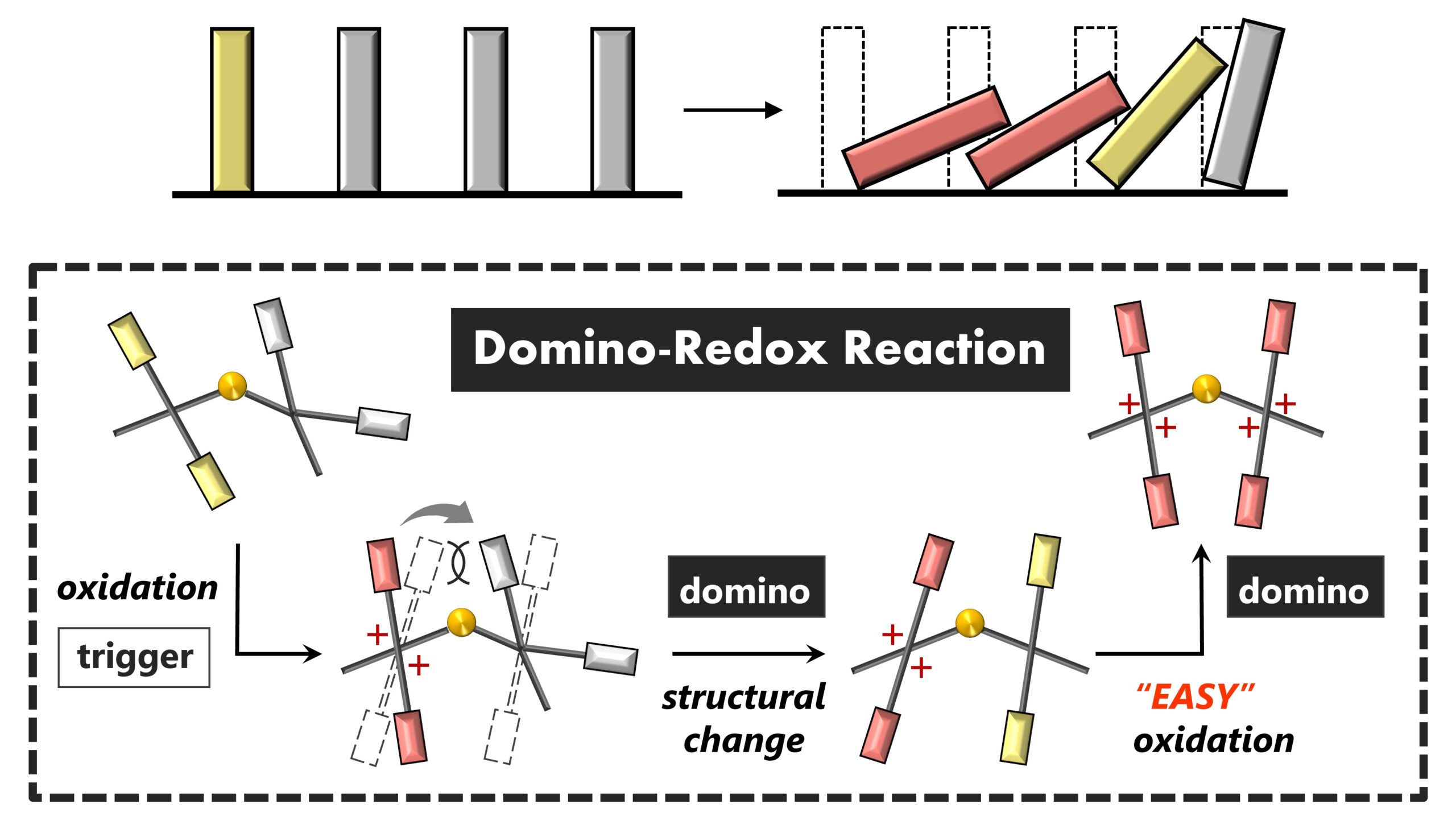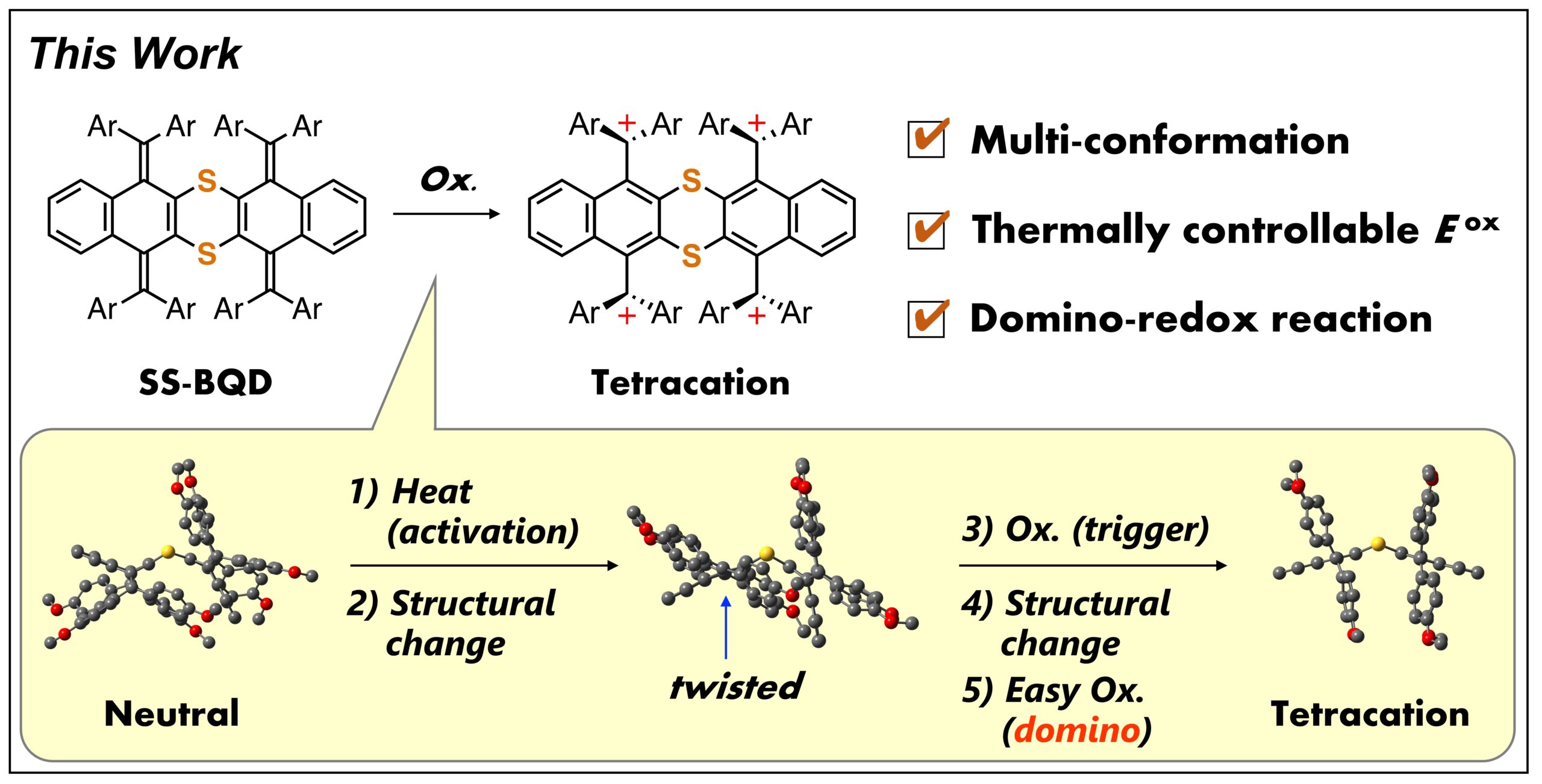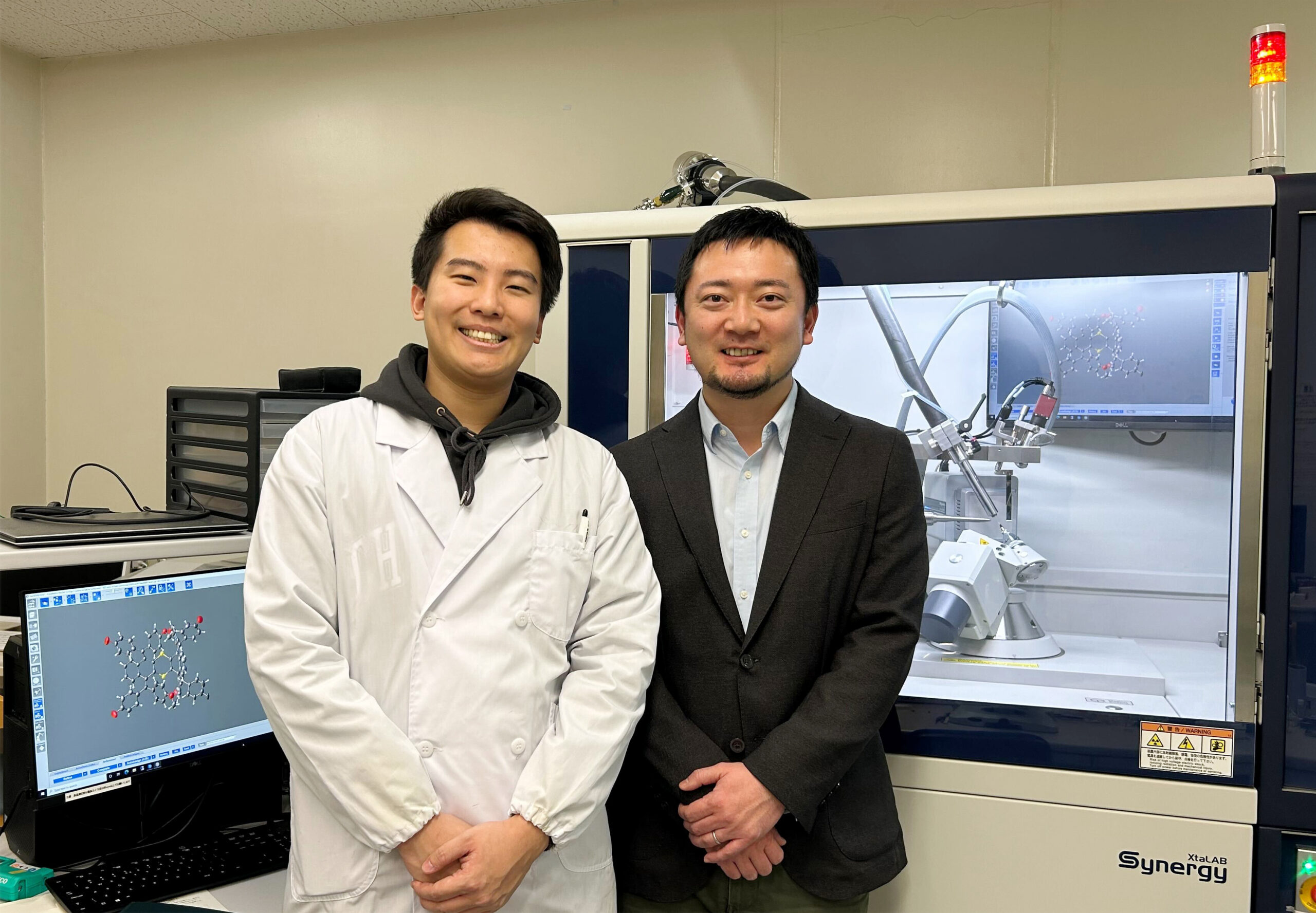The first domino falls for redox reactions
Research Press Release | January 09, 2024
Transmitting an effect known as a domino reaction using redox chemistry has been achieved for the first time.

A domino reaction is a series of chemical reactions where each reaction triggers the next reaction in the series, like falling dominoes (top). In a domino redox reaction, each reaction causes a structural change that triggers the next redox reaction in the series (bottom). (Takashi Harimoto, et al. Angewandte Chemie International Edition. November 28, 2023)
Domino reactions occur when the transformation of one chemical group stimulates the reaction of another attached group, or other molecule, leading to a rapid knock-on effect through the system like a row of falling dominoes. Researchers at Hokkaido University have now achieved the first example of a domino reaction in the branch of chemistry called redox chemistry.
The term redox comes from ‘reduction,’ referring to the gain of electrons, and ‘oxidation,’ referring to the loss of electrons. Redox reactions are therefore electron transfer processes.
“The problem with achieving domino reactions in redox processes is that the electron transfer, especially multi-electron transfer, produces electrically charged species whose electrostatic interactions can inhibit further change,” says chemist Yusuke Ishigaki of the Hokkaido team.
To overcome the obstacles the researchers designed a two-part molecule that undergoes a significant structural change when one part is converted between its electrically neutral (reduced) and positively charged (oxidized) states. This structural change transmits a chemical effect to the other part of the molecule that makes its own oxidation more likely.
The molecule they designed consists of two relatively large redox-active units connected by a non-planar flexible link formed by sulfur atoms. When one of the paired units loses electrons (is oxidized), it acquires two positive charges which acts as the trigger causing the other part of the molecule to twist around the core. A change in the state of the electrons in this twisted form from the initial folded form then facilitates the oxidation process to occur in the neighboring group, achieving the domino effect.

The molecule SS-BQD undergoes a domino-redox reaction to give a tetracation form of the compound (top). This domino redox reaction is initially triggered by heat, which causes a structural change that results in a domino redox reaction. (Takashi Harimoto, et al. Angewandte Chemie International Edition. November 28, 2023)
The initial triggering of the reaction can be initiated by a temperature rise, offering a means of control. Although this effect has only so far been demonstrated within a two-part molecule, the researchers suggest it might eventually be used to transmit wave-like redox transformations in much larger molecules with many of the ‘domino’ units linked together.
Applications of the discovery might be far in the future but there are clearly some general possibilities. Electrical and structural transformations traveling through molecular chains could become the nano-scale moving parts of chemical computation systems and sensors, for example. There are also possible applications in the new battery systems needed to support the ongoing transition to renewable electrical energy technologies.
“The control offered by heating and cooling could be used in many fields to make novel materials with switchable electronic properties, especially those involving multi-electron transfer,” says Ishigaki.
“It was very challenging, but also very satisfying, to demonstrate what nobody had achieved before, and we now hope to move into larger and more complex systems involving increased electron transfer,” Ishigaki concludes.

Takashi Harimoto, first author (left), and Yusuke Ishigaki, corresponding author (right), in front of the X-ray instrument (Rigaku XtaLAB Synergy-S). (Photo: Yusuke Ishigaki)
Original Article:
Takashi Harimoto, et al. Domino-Redox Reaction Induced by An Electrochemically Triggered Conformational Change. Angewandte Chemie International Edition. November 28, 2023.
DOI: 10.1002/anie.202316753
Funding:
This work was supported by Grant-in-Aid from the Ministry of Education, Culture, Sports, Science and Technology Japan (MEXT) and Japan Society for the Promotion of Science (JSPS; JP20H02719, JP21H01912, JP23H04011); Japan Science and Technology Agency (JST) PRESTO (JPMJPR23Q1); JSPS Grant-in-Aid for Research Fellow (JP22KJ0115, JP23KJ0065); The Foundation for The Promotion of Ion Engineering; and the Research Program of the Five-star Alliance in Network Joint Research Center (NJRC) for Materials and Devices.
Contacts:
Associate Professor Yusuke Ishigaki
Department of Chemistry
Faculty of Science
Hokkaido University
Tel: +81-11-706-2701
E-mail: yishigaki[at]sci.hokudai.ac.jp
Sohail Keegan Pinto (International Public Relations Specialist)
Public Relations & Communications Division
Office of Public Relations and Social Collaboration
Hokkaido University
Tel: +81-11-706-2186
Email: en-press[at]general.hokudai.ac.jp
Related Press Releases:
Toward tunable molecular switches from organic compounds
Carbon-carbon covalent bonds far more flexible than presumed
New record set for carbon-carbon single bond length
